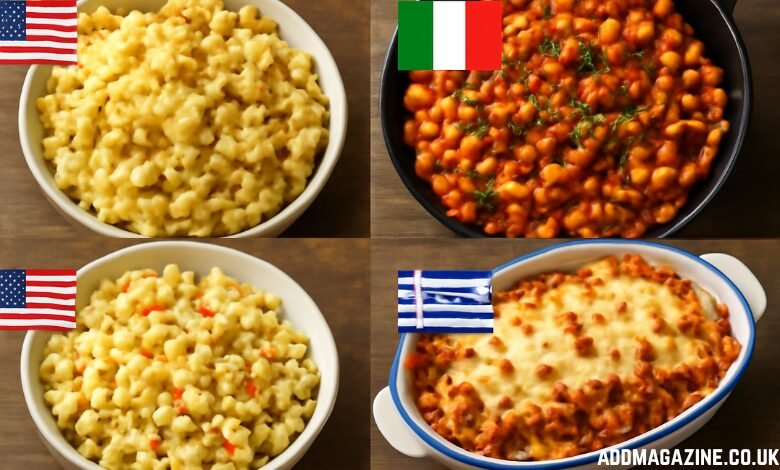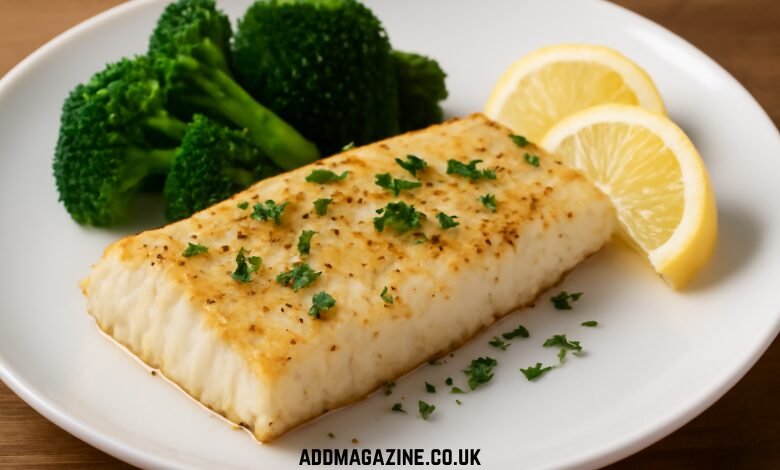Occasionally, people mistakenly write “micronii” instead of “macaroni” due to the way the word sounds when spoken. While “micronii” is not a real term, it’s a common misspelling that arises from the pronunciation of “macaroni.” This article will not only explore the origins of macaroni but also examine why “micronii” appears in writing and clarify its historical roots, as well as the global journey of this pasta staple.
The Origins of Macaroni
Macaroni, one of the most iconic types of pasta, has its roots deeply embedded in Italian history. The exact origin of macaroni is difficult to trace, but it is believed to have been made for the first time in ancient Italy, dating back to around the 12th century. The name “macaroni” comes from the Italian word maccheroni, which refers to a specific type of pasta—short, tube-shaped, and curvy.
It is important to note that macaroni was not an instant invention. Early forms of pasta, made from durum wheat, were created long before macaroni itself, and pasta-making has been a part of Italian culinary culture for centuries. By the 12th century, Italian cooks had refined the process, using semolina flour (ground durum wheat) mixed with water to create a firm dough that could be molded into various shapes. Macaroni, in its familiar tube shape, emerged as one of the more popular forms.
Macaroni spread throughout the Mediterranean in the following centuries, thanks to trade routes that connected Italy with North Africa and the Middle East. By the 16th century, macaroni had begun to make its way to other parts of Europe, with Italians becoming famous for their mastery of pasta-making.
The Confusion: “Micronii” vs. “Macaroni”
The misspelling of macaroni as “micronii” is common due to how the word sounds. Phonetically, “macaroni” might seem to require an extra vowel, prompting some to add an additional “i” at the end. However, it’s essential to note that “micronii” has no culinary significance and is simply a typographical error. There is no evidence to suggest that “micronii” is used to describe any specific type of food or pasta.
This confusion highlights the way language evolves and how pronunciation can influence how words are written. If you see “micronii,” it’s likely just an innocent typo, and what the writer intended was “macaroni.”
Macaroni’s Rise to Popularity
By the 18th century, macaroni became widely known across Europe, especially in countries like England, France, and Spain. However, it wasn’t until Italian immigrants brought their cooking traditions to America in the 19th century that macaroni began to take on its modern-day significance. Italian-American cuisine, with its use of macaroni, became a foundational part of American food culture. It was particularly embraced by the working-class population, as macaroni was both inexpensive and easy to prepare in large quantities.
In the early 20th century, macaroni began to gain even more prominence in the United States, especially with the invention of macaroni and cheese. This dish, combining macaroni with cheese and often breadcrumbs, became a popular comfort food, particularly in American households. The dish became iconic during the Great Depression, when it was promoted as a budget-friendly meal.
The Global Spread of Macaroni
Macaroni’s spread beyond Italy and America marked a significant chapter in its global journey. Throughout the 20th and 21st centuries, macaroni found its place in various cuisines around the world. In the Mediterranean, macaroni has been incorporated into tomato-based dishes and is often paired with seafood or meats. In the Middle East, macaroni is often used in hearty, spiced stews. The American version of macaroni and cheese has evolved over time to include variations like baked macaroni and cheese, as well as microwaveable versions that can be prepared in minutes.
The pasta’s shape has also made it a favorite in cold pasta salads, especially in the summer. Its ability to absorb different sauces and flavors makes it an adaptable ingredient in both hot and cold dishes. Macaroni has found its way into fusion cuisines, from mac and cheese served with barbecue chicken to macaroni used in Thai-inspired curries.
Macaroni in Modern Cooking
Today, macaroni continues to be a versatile ingredient in many kitchens. It is used in a wide range of dishes, from simple pasta bakes to gourmet recipes. The rise of dietary preferences, such as gluten-free and high-protein diets, has led to the creation of alternative macaroni options. These include gluten-free macaroni made from rice or corn flour, as well as macaroni made from legumes like chickpeas or lentils.
Macaroni’s ability to blend with other ingredients, from cheeses to vegetables and meats, ensures that it remains a beloved choice in both home cooking and restaurant menus. The simple yet comforting combination of macaroni and cheese remains as popular as ever, now available in many variations, from vegan to gourmet versions.
Health Benefits of Macaroni
While macaroni is often associated with indulgent, cheesy dishes, it also offers certain health benefits, particularly when made with whole wheat or other alternative grains. Whole wheat macaroni, for example, provides fiber, which helps with digestion and can lower cholesterol levels. It is also a good source of B vitamins, which are important for energy production and overall health.
When paired with fresh vegetables, lean proteins, and healthy fats, macaroni can be part of a balanced meal. A simple macaroni salad with tomatoes, cucumbers, and a drizzle of olive oil can offer a nutritious and satisfying option. Adding lean meats or legumes can also increase the protein content, making macaroni a versatile base for healthy meals.
Famous Dishes Made with Macaroni
Macaroni is an incredibly versatile ingredient that serves as the foundation for many iconic dishes around the world. One of the most famous macaroni dishes is Macaroni and Cheese. This classic dish, beloved in the United States, is made by mixing cooked macaroni with a creamy cheese sauce, often topped with breadcrumbs and baked to golden perfection. Over time, variations have emerged, such as adding bacon, vegetables, or even lobster for a gourmet twist. Macaroni and cheese is also commonly served as a side dish during holiday meals, like Thanksgiving.
Another well-known dish is Macaroni Salad. This cold dish is a staple at picnics and barbecues, especially in the United States and Western countries. It typically features cooked macaroni mixed with mayonnaise, chopped vegetables, and sometimes, hard-boiled eggs or protein additions like chicken or tuna. The simplicity of macaroni salad makes it an adaptable dish that can be customized with various ingredients, from pickles to mustard, for different flavor profiles.
In Italy, Maccheroni al Forno (Baked Macaroni) is a popular dish, where macaroni is baked with a rich tomato sauce, mozzarella cheese, and sometimes ground meat. This dish is similar to the American-style baked ziti but uses macaroni as the pasta base. It is a comfort food commonly served for family gatherings or during festive occasions. Pastitsio, a Greek variation, also features baked macaroni, layered with a spiced meat sauce and béchamel sauce, making it a hearty and flavorful dish.
Types of Macaroni
Macaroni itself comes in many shapes and sizes, allowing for a wide range of culinary uses. The most common type of macaroni is elbow macaroni, which is shaped like a curved tube. Elbow macaroni is often used in macaroni and cheese, pasta salads, and soups. Another popular form is straight macaroni, which resembles a shorter version of spaghetti and can be used in baked dishes or cold salads.
Cavatappi is a spiral-shaped macaroni that holds sauce well and is often used in pasta salads and hearty baked dishes. The corkscrew shape makes it perfect for trapping both creamy and chunky sauces. Another variation is shell macaroni, which is shaped like small conch shells. Its unique shape makes it great for filling with cheese and sauces, resulting in a satisfying bite-sized meal.
Macaroni rigati, which is ridged macaroni, allows sauces to cling to its surface, making it perfect for thicker sauces. This type of macaroni is commonly used in dishes like pasta alla Norma (pasta with eggplant and ricotta cheese) or in creamy baked dishes. Finally, mini macaroni is used in soups and light salads, where smaller pasta pieces can soak up the broth or sauce without overwhelming the dish.
Uses of Macaroni in Different Cultures
Macaroni has spread far beyond Italy and has been embraced by many cultures, each adopting it in their unique way. In American cuisine, macaroni and cheese is a symbol of comfort and nostalgia. However, American cuisine also utilizes macaroni in casseroles—baking macaroni with cream, cheese, and vegetables to create hearty, family-style meals. Additionally, macaroni salad is a popular side dish at barbecues, with each region in the U.S. adding its own local twists.
In Greek cuisine, macaroni plays a significant role in dishes like Pastitsio (mentioned earlier), a baked casserole similar to lasagna but made with macaroni instead of flat noodles. The Greeks also use macaroni in their version of moussaka, a layered casserole made with eggplant, ground meat, and béchamel sauce, often incorporating macaroni for added texture.
In North African cuisine, particularly in Morocco, macaroni is commonly used in soups and stews, where it absorbs the rich, flavorful broth. Dishes like Harira, a traditional Moroccan soup made with chickpeas, lentils, and tomatoes, often feature macaroni, providing both texture and substance. In Egypt, a similar approach is taken, where macaroni is used in hearty vegetable-based stews.
Middle Eastern cultures also incorporate macaroni into their cuisine, with macaroni with tomato sauce being a common dish in countries like Lebanon and Syria. It is often cooked with a variety of spices and olive oil, served alongside grilled meats or as a simple, satisfying vegetarian dish. In Turkey, a dish called kumpir includes macaroni as one of the many fillings in a baked potato stuffed with vegetables, meats, and sauces.
Macaroni in Fast and Convenient Meals
In the modern world, macaroni has evolved to fit into the fast-paced lifestyles of many people. The rise of instant meals has led to the creation of pre-packaged macaroni products, such as instant macaroni and cheese. These convenience foods, which are ready in just a few minutes, have become a quick go-to option for busy families, college students, and individuals looking for a fast meal. While instant versions are often criticized for their nutritional content, they continue to be widely popular due to their speed and affordability.
On the other hand, frozen macaroni and cheese offers another time-saving solution. These products, which are pre-made and frozen for later use, can be baked straight from the freezer and enjoyed as a quick dinner option. Frozen macaroni dishes have grown in popularity, especially in the convenience food market, due to their long shelf life and the convenience of ready-to-eat meals.
Macaroni’s Nutritional Value and Health Considerations
While macaroni is often seen as a comfort food, it also has a place in a balanced diet, depending on how it’s prepared. Traditional macaroni made from white pasta is high in carbohydrates, which provide energy. However, when made with whole wheat or other whole grains, macaroni offers additional health benefits, such as increased fiber content, which aids in digestion and helps maintain a healthy heart.
To make macaroni a healthier dish, consider adding more vegetables, lean proteins, and healthy fats. For example, adding sautéed spinach, tomatoes, and grilled chicken can make a more nutritious macaroni dish. Additionally, swapping out high-fat cheeses for lighter options, such as ricotta or mozzarella, can reduce the calorie count while still providing creamy texture and flavor.
In recent years, many food brands have also started offering gluten-free macaroni, made from rice flour, corn, or chickpeas. These alternative macaroni options cater to individuals with gluten sensitivity or those following a gluten-free diet. Furthermore, high-protein macaroni made from lentils or quinoa is a growing trend, as it provides a healthier, protein-packed alternative to traditional pasta.
The Legacy of Macaroni: A Timeless Pasta
Macaroni has proven to be more than just a basic pasta; it’s a culinary tradition that has stood the test of time. From its origins in Italy during the 12th century to its modern-day presence in kitchens worldwide, macaroni continues to be a favorite ingredient in many cuisines. Its ability to evolve and adapt to different cultural tastes is a testament to its enduring popularity.
Whether you’re making a classic macaroni and cheese or creating a more adventurous dish, macaroni is a pasta that brings comfort and satisfaction to the table. And next time you see “micronii” mistakenly written, just remember: it’s a simple typo, and the correct word is “macaroni”—a timeless pasta loved by millions.
Conclusion: A Versatile Pasta with Endless Possibilities
Macaroni is a timeless pasta that has made its mark in many different cultures, cuisines, and meal types. From the iconic mac and cheese to baked pastas, salads, and soups, macaroni’s versatility makes it a favorite in households and restaurants around the world. Whether used in a quick and easy dish or a more elaborate recipe, macaroni continues to evolve, accommodating the diverse tastes and dietary preferences of people everywhere.
The occasional misspelling of “micronii” instead of “macaroni” is a simple mistake that doesn’t take away from macaroni’s well-established place in the culinary world. So, next time you enjoy a warm bowl of macaroni, take a moment to appreciate this pasta’s rich history and global appeal. Whether it’s served in a luxurious casserole, a comforting soup, or as a quick snack, macaroni will always have a place in our hearts and on our tables.




